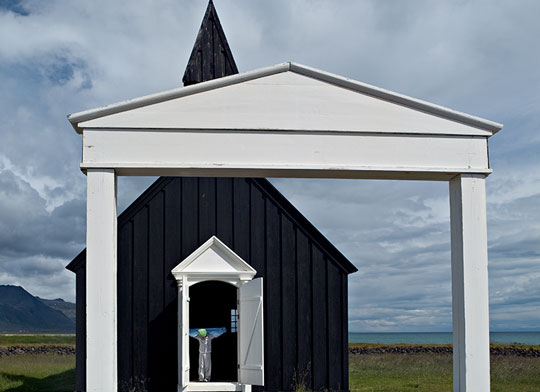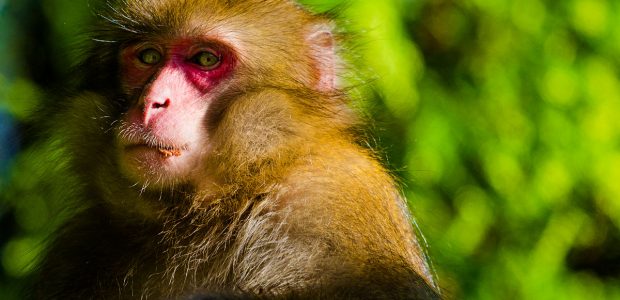Black Church and Child — Iceland, July 2004
Contax 645 with Kodak DCS Proback 645C and 35mm f/3.5 Distagon
The making of the above photograph is described in my essay titledTwo Icelandic Portraits. I find the image compelling, and apparently so do a number of other people, because it has generated a significant number of e-mails.The teacher in me can’t resist though looking at the image with an eye that goes beyond simple cultural appeal, and to want to analyze the photograph in an attempt to understand why it works, especially from a graphic perspective.
Of course the thing that is most obvious are the strong architectural shapes of the portico and the church itself. The composition is not in any way symmetrical, a typical source of esthetic appeal. Indeed at first glance it is very unbalanced. Almost jarringly so. But then the weight of the black church is seen to be counterbalanced by the mass of the foreground white frame, and a strange sort of harmony appears.
________________________________________________________
Triangles
But it’s the unexpected number of triangular shapes that give strength to the graphic side of the image. How many do you see?
I count nine significant ones. Starting at the top…
— the steeple
— the top of the white portico
— the implicit shape of the church’s roof
— the sky area to the left of the church beneath the portico
— the one over the church’s doorway, and also the lighter one within it
— the shape of the child’s arms and sweater
— two contained within the open church door
— the shadow at the bottom left of the frame
— a light triangular area of grass in the extreme lower left.
Did I see all of these triangles as I was setting up the frame? No, of course not, though I did see a few of the major ones in the architecture. But a few weeks later, once I saw the image on-screen for the first time, I became aware that triangular shapes were the commanding graphic aspect of the composition, and when combined with the significance of the child in the doorway, for me at least the image took off.
Look at some photographs of your own, or of photographers whose work you admire. Look for geometric shapes, repeating patterns and symmetry, or its lack. Try and figure out why certain images "work" and others don’t, based on what you see.
______________________________________________________________________________
Fractals
This photograph has elicited many different comments, but one which may provide a unique insight is as follows…
I would like to add some comments (hopefully insight) into why this image
works so well. You alluded to it with the comment:
"Look for geometric shapes, repeating patterns and symmetry"What you are referring to (and you may know this) is a type of mathematics
called fractals. As you probably know, fractals are (in the most general
sense) patterns that have internal patterns that are similar and (to some
extent) repetitive. This is something I know quite a bit about, as I have
done research on fractals for nearly 15 years) and currently have a million
dollar research grant from the National Science Foundation to study the
fractal nature of rocks and how this affects the movement of contaminated
groundwater.This image is "strongly fractal" – the triangular patterns repeat at
different scales within the image. It is widely understood that images that
are fractal are usually pleasing to the eye (mind?). However the reasons for
this are poorly understood, and I’m guessing, will probably never really be
figured out. (Why do many people have a "favorite color"?) The father of
fractal mathematics, Benoit Mandelbrot has written about these issues fairly
extensively, as have many others.— SW
You May Also Enjoy...
Camping in the Japanese Highlands with Snow Monkeys
FacebookTweet During summer every year, I start looking forward to my Autumn Leaves Photo Tours and my Hokkaido Photo Tour that are usually just around
SMA Workshops
Winter 2012 – 2013 ScheduleSORRY – SOLD OUTAccepting Waitlist Requests San Miguel de AllendeDuring winter 2012 – 2013 I will be teaching three Master Class


